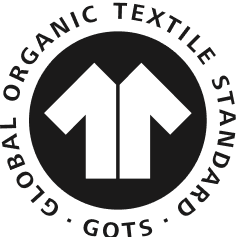- 17 January, 2024
By Santi Mallorquí, CEO of Organic Cotton Colours.
Cotton emerges naturally in a variety of colours, such as raw, brown, and green, which we cultivate with dedication. For those unaware, it might seem like we are innovating, but in reality, we are simply following what is natural.
Therefore, we oversee the entire production process: from seed to manufacturing, encompassing cultivation, spinning yarn and producing fabrics. We do this by working closely with farmers and businesses that are integral to our project, sharing our vision.
The result is organically grown cotton, obtained fairly, with profound respect for both those who cultivate it and those who wear our pieces, all in complete harmony with the environment.
Sometimes, everything is as simple as pausing to become aware of your inner voice.

Since 2009, I began to take an interest in the project of Ángel Sánchez Egea, who manufactured garments with naturally colored 100% organic cotton, a cotton that naturally grows colored from the seed, without genetic engineering, following the natural tradition of over 5000 years.

In its first 25 years, Organic Cotton Colours marketed various items under the FoxFibre Colorganic brand, aiming to establish itself as the premier choice for garments made from the purest cotton on the market. All of this was done with a special focus on users suffering from dermal allergies or intolerances to toxic agents present in the production of conventional cotton clothing.
Resonating strongly with these values, I decided to contribute my business expertise to support this brand that could already be considered “cum laude” in terms of sustainability, a concept that was beginning to be widely discussed at that time.
My first step was to visit Sally Fox in Guinda, California. Although my ideas were somewhat disconnected from reality at that time, lacking experience in the textile sector and even less in cotton cultivation.
After 4 hours of an engaging conversation with Sally, I realized we had a significant problem. She could not continuously supply us with cotton, and the name of our brand would lose its meaning if we did not use more U.S. cotton. Furthermore, manufacturing in Portugal with our regular supplier would not continue as they no longer considered us a priority client after several years without production.

We had no cotton, no manufacturing, and no brands yet interested. But it also meant we had no limits to seek structural changes in the business model that would yield positive results over time.
The most complicated part was transitioning from a mere brand to becoming a “standard” to expand the sale of our cotton to different emerging markets within the scarce organic fabrics market. We made strategic changes to be part of a circular economy where everyone benefits, allowing other brands to be part of the project and make it sustainable over time.
Given our limited cotton needs, the norm would have been to rely solely on certifications like GOTS to obtain fabric or thread from Turkey, for example, given its reputation for strict anti-GMO regulations and proximity. However, true to our commitment to ensure our products from the source, we chose the significant challenge of producing up to 20 tons annually of naturally colored 100% organic cotton fiber – the minimum quantity spun by our regular supplier in Barcelona.

Today, we understand the importance of controlling the supply chain, providing differentiated value to our cotton in terms of social and economic impact. Direct contact with farmers has helped us understand firsthand how they live and what their needs are to carry out their activities with the utmost guarantee.
Looking back, I reflect on the luck I had to face these types of situations. I have always believed that in challenging situations, there is no time for lamentations; you must make the most of them with a positive attitude, willingness to learn, and eagerness explore all alternatives without fear. Your actions determine your results, and you can emerge stronger or sink.
This is only the first article in a series of six in which I will share my experience and learnings in the development of Organic Cotton Colours. I look forward to seeing you in the second chapter!





